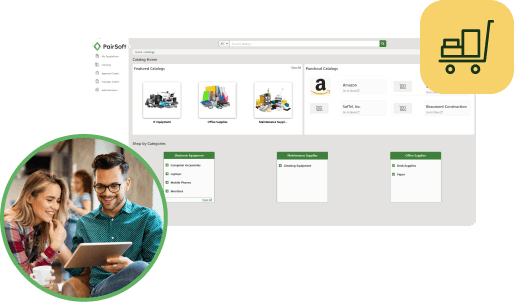Back in 2018, we compiled a list of
10 most often cited benefits of cloud computing, sharing industry sources that validate and reinforce those benefits. Today, we wanted to revisit and update areas of that list in light of the new normal of the global health and economic crisis. What are the benefits of cloud computing in the new normal? Here we offer up the top 10 reasons you shouldn’t wait any longer to make the move to the cloud.
1. Work from anywhere
The ability for employees to access vital business applications from anywhere is one of the most compelling, and most commonly cited benefits of cloud computing. In fact, providing access to data from anywhere is the main reason for cloud adoption. As most of us find ourselves working from home, this is more important than ever. In fact, many pundits wonder whether we’ll ever go back to the way things were, so mobile access is critical.
Working from home has financial advantages as well. Real estate giant CBRE estimates that the typical company in the U.S. spends upward of $12,000 per employee per year for office space. Saving $12,000 per employee per year is significant, and adds to other documented benefits of a work-from-home workforce, including increased productivity and higher levels of employee satisfaction and happiness.
2. Lower costs
The cost savings of utilizing SaaS applications is often touted as a major benefit over on-premise deployments. In fact, back in our 2018 article, cost-cutting topped the list of the reasons why enterprises choose to adopt the cloud. Those cost savings come from multiple factors, including:
- Lower acquisition costs — compared to purchasing perpetual licenses
- Lower hardware costs — no servers to buy
- Minimal IT resources required to run — fewer IT personnel required
- Less expensive to manage — updates and database management performed by vendor
3. Scale easily by provisioning resources on-the-fly
CIOs and IT directors rank operational agility as a top driver for cloud adoption, and it’s no wonder — agility and flexibility can provide companies with a true competitive advantage. By flexibility and agility, we’re referring to the ability to respond and adapt to market and environmental changes rapidly and cost-effectively. Cloud-based solutions are inherently flexible, allowing companies to scale up or down with demand, without the need to add to or retire existing infrastructure.
It’s often difficult for small- and midsized businesses (SMBs) to scale their businesses safely and cost-effectively. With cloud computing, rather than having to invest a significant amount into scaling, a business can instead provision the resources it needs as needed. This is especially useful for businesses that have intermittent waves of activity and variations in user counts — such as those prompted by the current global pandemic.
4. Improved collaboration
When teams can easily access, edit, and share documents in real time, collaboration soars. The cloud facilitates this type of cooperation by making documents available from anywhere, anytime, and delivering full visibility into the collaborative process.
A Forbes Insight research study lists some of the benefits of cloud-based collaboration as:
- Enhanced communication with customers, suppliers, and partners
- Enables new products and services
- Supports business scalability
- Enables workforce mobility
- Reduces operating costs
While collaboration can certainly take place outside of the cloud, nothing can compete with cloud’s ability to facilitate collaboration across functional boundaries, time zones, and between organizations. And, during a time when face-to-face collaboration is a rarity, cloud collaboration tools become essential for business continuity.
5. Increased security
Early cloud adoption was stymied by security concerns — executives were reticent to trust others to house their data. However, according to Jay Heiser, Research Vice President at Gartner, many of these worries are unsubstantiated. He recommends CIOs change their line of questioning from “Is the cloud secure?” to “Am I using the cloud securely?”.
For their part, cloud providers have worked diligently to minimize security concerns, and continue to invest heavily in security. Today, there’s no question that the public cloud service providers, such as Amazon, Google and Microsoft, offer a more secure environment than you could ever hope to with your on-premise servers. Security breaches are rarely caused by poor cloud data protection — they’re usually caused by humans. Stolen log-in credentials, disgruntled employees, accidental deletions, insecure wi-fi connections and other employee mishaps are the main security risks and all are preventable with proper tools and training.
6. Minimal IT infrastructure
Cloud computing allows users to access computing and storage resources virtually, with minimal resources on their end. Companies’ can reduce or even eliminate the costs associated with maintaining servers and storage. The lack of on-premise infrastructure also removes the associated operational costs in the form of power, air conditioning and hardware and software administration costs. The result is that companies will likely need fewer (if any) dedicated IT personnel and can focus those resources on their core mission.
Gartner research shows that companies can save 26% by replacing perpetual software licenses with cloud subscriptions, and an additional 15% from associated staff reduction.
7. Always up-to-date
Remember the massive Equifax data breach in 2017, which affected up to 143 million Americans, with Social Security numbers, birth dates, and home addresses exposed? The hackers were able to access the credit reporting agency’s data through a known vulnerability. A fix for this security hole was actually available two months before the breach, but the company failed to update its software. Software updates are important because they often include critical patches to security holes. When software is hosted in the cloud, updates are typically made automatically, meaning users are always running the most current version. Other benefits of always being up to date include:
- Eliminate time spending updating server application and desktop devices
- Continually take advantage of the latest features and functionality
- Benefit from ongoing improvements in speed and security
- Maintain compliance with changing regulations
- Ensure compatibility with other, newer applications
8. Backup and disaster recovery
Cloud-based backup and disaster recovery solutions help organizations reduce complexity and deliver flexible, fast and cost-effective functionality. Because virtual servers are hardware independent, applications, OS, patches and data can be quickly transferred from one data location to another without the need to reload each component of the server, allowing for a more expedient recovery and reduced impact to your business.
9. Predictable, budgetable pricing
Cloud-based Software-as-a-Service (SaaS) applications are typically sold as subscriptions, where companies pay a monthly subscription fee that may vary by the number of users and/or the capabilities desired.
With a fixed fee model, companies are better able to budget their overall technology expenditures. In addition, a SaaS solution is generally not considered a capital expenditure, rather it’s considered an operating expense, which can yield tax benefits — but certainly consult with your tax advisor on this matter. Deloitte provides a good explanation of the differences in this paper.
10. Document access and control
As the need for collaboration between business users increases, so does the need for tight document control and easy, anywhere access. Cloud-based document access and control solutions store documents centrally, enabling everyone (with the correct security privileges) to access, view, share, and edit content. You are familiar with some of the big names in in this market space: Dropbox, Google, and Adobe each have offerings. However, many cloud-based applications provide the capability to store, associate, and share documents related to records in the application.
Cloud is the Future. Cloud is the Now.
In its annual cloud predictions, Forrester predicts the whole cloud market – SaaS, PaaS and IaaS – will grow to $299.4 billion in 2020. IDC predicts that number will reach $500 billion as soon as 2023. It’s quite likely that both research organizations will revise their estimates upward as the coronavirus pandemic makes cloud an increasingly attractive option. Is your organization embracing all the benefits cloud has to offer?







